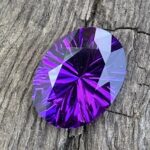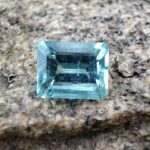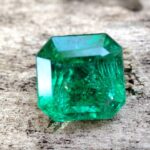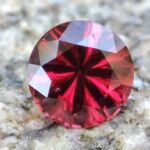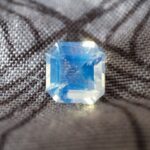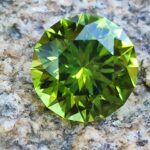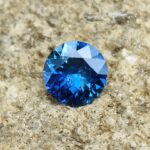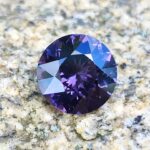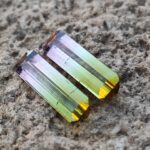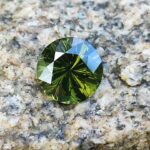What does the purity of gemstones tell us?
Clarity is defined as the degree of perfection or imperfection of a gemstone. Jewelers terminologically refer to external imperfections of a stone as blemishes and internal ones as inclusions, which, however, cannot be perceived as a negative property in all cases. Some gemstones cannot exist without them – for example, cat’s eye or star sapphire, in which needle-like inclusions create a unique phenomenon that has made them famous. Interestingly, in laboratory conditions, inclusions are sometimes deliberately inserted into artificially created stones in order to achieve these unique effects.
We must also not forget that minerals are formed in different environments and are composed of various chemical elements, which affect not only their color, but also their susceptibility to inclusions. So, if you want a gemstone that tends to have imperfections (e.g. emerald or sapphire), without blemishes or inclusions, then you have to be prepared for the price of such a stone to skyrocket.
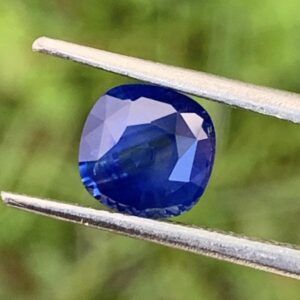
Valuation of precious stones
When determining the price of gemstones based on their clarity, gemologists evaluate the type, size, number, and position of inclusions. The type of imperfection indicates how much the gemstone will be damaged by normal wear and tear. The size of the inclusion relates to the higher likelihood of the stone being damaged by normal wear, as the larger the imperfection, the greater the risk.
The number of inclusions is usually put in proportion to the size – for example, several smaller inclusions will not affect the price and durability of the gemstone as much as one large one. As for position, it is obvious at first glance that an inclusion directly under the table will be more clearly visible than one hidden in the girdle.
Gemstone Classification System – Types by Purity
The grading scale for colored gemstones, depending on their clarity, is based on the type of stone. Because individual minerals vary significantly in their properties, the globally recognized gemological institution GIA classifies them as Type I, Type II, or Type III. Are you wondering how to recognize a genuine gemstone? Believe me, the easiest way to do this is to know that the selected specimen is not completely perfect.
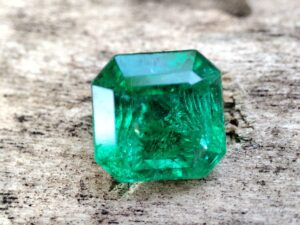
Gemstones falling under type I are usually described as “eye-clean”, meaning that you will not see any imperfections without using a magnifying glass. Stones from this group that contain visible inclusions are used in jewelry only exceptionally; they are set in a jewel at most if the setting covers the flaw or inclusion. Type II also includes “eye-clean” gemstones, but in much smaller quantities than type I. Although even in very high-quality stones from this group you can see imperfections even without using a magnifying glass, they remain popular gemstones for jewelers. It is the presence of visible inclusions that will answer the question of how to recognize a real ruby or how to recognize a real sapphire, which are among the most popular representatives of type II. Inclusions are actually typical for the last type III. Therefore, even though gemstones contain easily recognizable inclusions, jewelers are not afraid to set them in jewelry, as the leading representatives of this group, such as emerald or melon tourmaline, reach astronomical prices in their precious variations without visible inclusions.
Now, see which group your favorite gemstone belongs to so that you know what to expect for your money when buying it.
Type I – usually clear to the eye
aquamarine, morganite, aquamarine, tanzanite, green tourmaline, blue zircon
Type II – usually the inclusion contains
alexandrite, sapphire, ruby, all types of garnet, olivine/peridot, quartz, amethyst, citrine, ametrine, tourmaline (except green, pink/red, watermelon), zircon (except blue), labradorite, moonstone
Type III – inclusion always contains
emerald, red/pink tourmaline, watermelon tourmaline
The most common inclusions in gemstones
Most gemstones are characterized by small natural irregularities, or inclusions. Although most of them cannot be seen with the naked eye, if you use a 10x magnifying glass, you will be able to observe them. However, you will be able to see larger inclusions even without a magnifying glass. The most common types of inclusions in gemstones include needles, crystals, pinpoints, feathers, chips, or scratches, which can be divided into three basic categories.
- Tubes: They form during crystal growth, either at the beginning or over time. They are sometimes filled with liquid, gas, or solids. They are common in topaz, quartz, or opal.
- Growth phenomena: Examples include crystals, natural glass, and limonite channels (hollow channels coated with iron compounds), which appear in sapphires, for example.
- Solid inclusions: Examples include crystals, natural glass, and white mica. These inclusions lead to asterism and the cat’s eye effect.
Purity levels
Each of the gem clarity grades is defined by the type the stone falls into. What is considered an easily recognizable inclusion in Type I, and therefore unsuitable for the jewelry industry, may be an imperfection in Type III, which is not as serious. See in more detail how a GIA expert characterizes the clarity grades for each type.
| Typ I | Typ II | Typ III | |
|---|---|---|---|
| VVS | Slight inclusions, difficult to distinguish under 10x magnification. Clean to the eye. | Small inclusions, sometimes visible under 10x magnification. Usually clean to the eye. | Recognizable inclusions under 10x magnification. Usually clean to the eye. |
| VS | Small inclusions, sometimes visible under 10x magnification. Usually clean to the eye. | Recognizable inclusions under 10x magnification. They may be visible to the eye. | Clear inclusions under 10x magnification. They may be visible to the eye. |
| SI1 | Easily recognizable inclusions under 10x magnification. Occasionally visible to the naked eye. Usually slightly prominent inclusion relief. | Obvious inclusions, size or quantity below 10x magnification. Visible to the naked eye. | Striking when viewed with the naked eye. |
| SI2 | Inclusions easily recognizable with the naked eye. Usually slightly protruding inclusion relief. | Distinct inclusions, size or quantity under 10x magnification. Very noticeable to the naked eye. | Very noticeable when viewed with the naked eye. |
| I1 | Slight effect on appearance or durability. | Slight effect on appearance or durability. | Slight effect on appearance or durability. |
| I2 | Significant impact on appearance or durability. | Significant impact on appearance or durability. | Significant impact on appearance or durability. |
| I3 | Significant impact on appearance and durability. | Significant impact on appearance and durability. | Significant impact on appearance and durability. |
| Dcl | Opaque. | Opaque. | Opaque. |
Let’s not be afraid of “imperfections”
Do you think that only flawless gemstones are worth investing in? This is not true. Remember that flawless gemstones are even rarer than perfect diamonds. So while clarity is an important factor in determining the price of colored stones, it does not play the same role as it does for clear diamonds.
For example, a natural emerald that was created using really rough processes is considered very valuable by GIA experts, even if its clarity is on the I1 to I3 scale. Of course, inclusions are easier to see in lighter stones than in deeply colored specimens. Emeralds without inclusions are usually synthetic.
You can also see imperfections as confirmation of the authenticity and origin of the gemstone and as an easy way to recognize a precious stone. For example, you can distinguish such prized Burmese rubies relatively easily thanks to their unique inclusions and unusual crystal formations. African rubies are born under different conditions, which is why they have their own variations of imperfections.
However, there are also types of inclusions that, in combination with the selected gemstone, increase its price. As an example, let’s give the popular amber or rutilated quartz, in which imperfections can create original patterns and designs. Fine rutile fibers lend Kashmir and Burmese sapphires and rubies a velvety color. And we must not forget the rare Russian garnet with a horsetail inclusion.
So, as you can see, inclusions are not always bad. It always depends only on the type of gemstone.
